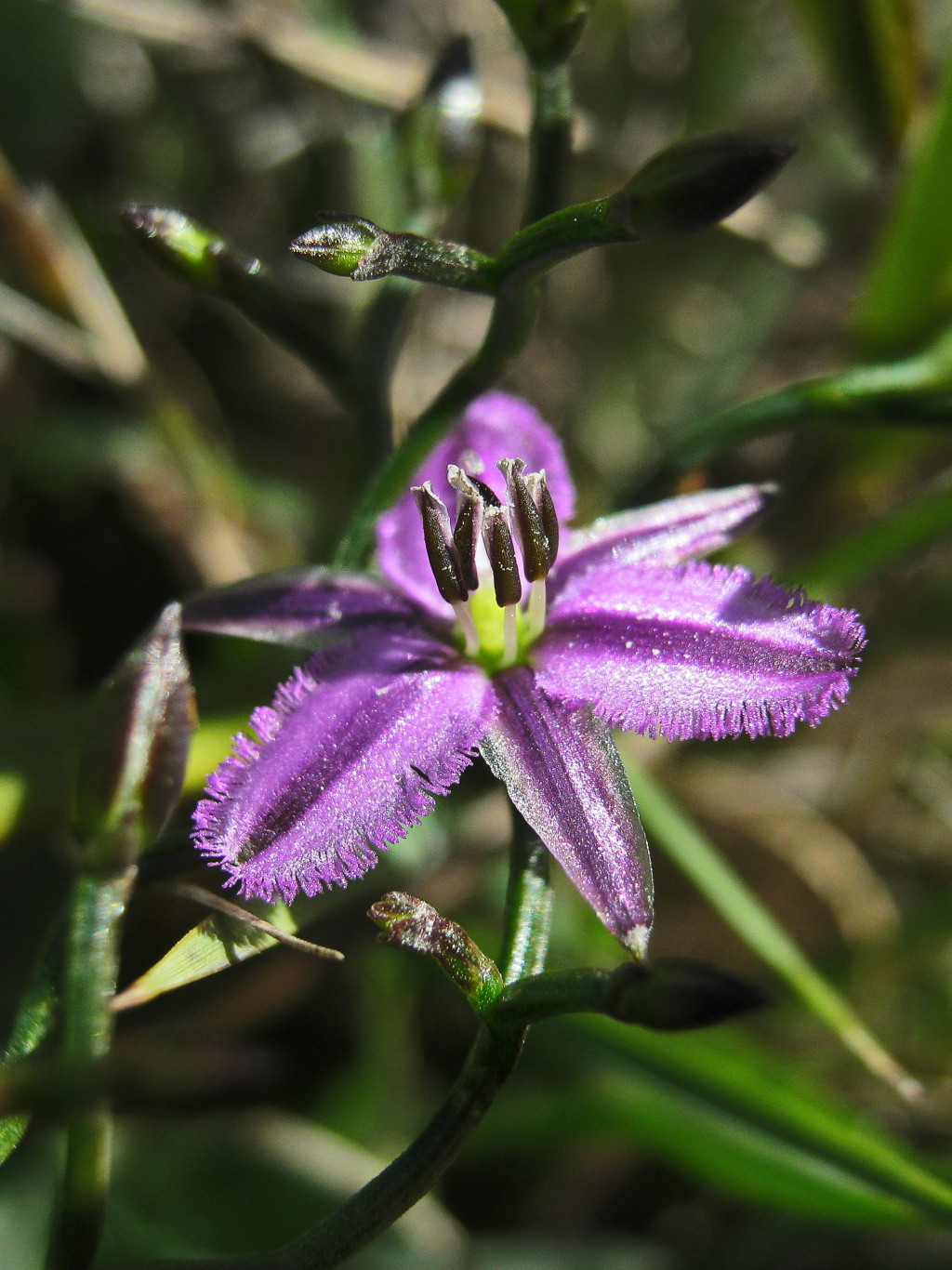Thysanotus patersonii
R.Br. Twining Fringe LilyPlants with twining stems, usually many-branched, prostrate or climbing to c. 1 m high, stems quadrangular in section. Roots with plump tubers 2–5 cm long, sessile or almost so. Leaves basal, 1–2, linear-filiform, erect, 10–20 cm long, 1–2 mm wide, infrequently produced. Inflorescence a sparse panicle or flowers solitary and terminal on branches; flowers purple; perianth segments spreading, 8–11 mm long, fringe on petals 0.5–1 mm long; stamens equal, shorter than the perianth segments. Seeds c. 1 mm diam. Flowers Aug.–Nov.
LoM, MuM, Wim, GleP, VVP, VRiv, RobP, MuF, GipP, OtP, WaP, Gold, CVU, GGr, DunT, NIS, EGL, EGU, WPro, HSF, HNF, OtR, Strz, VAlp. Also WA, SA, NSW, ACT, Tas. A widespread and locally common plant across most of the State, but rare in the far east. Occurs in many vegetation types but not tall forests, wet or saline communities.
Conran, J.G. (1994). Liliaceae. In: Walsh, N.G.; Entwisle, T.J., Flora of Victoria Vol. 2, Ferns and Allied Plants, Conifers and Monocotyledons, pp. 637–686. Inkata Press, Melbourne.
 Spinning
Spinning



